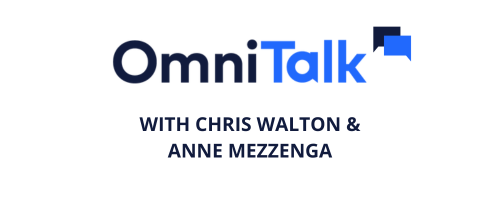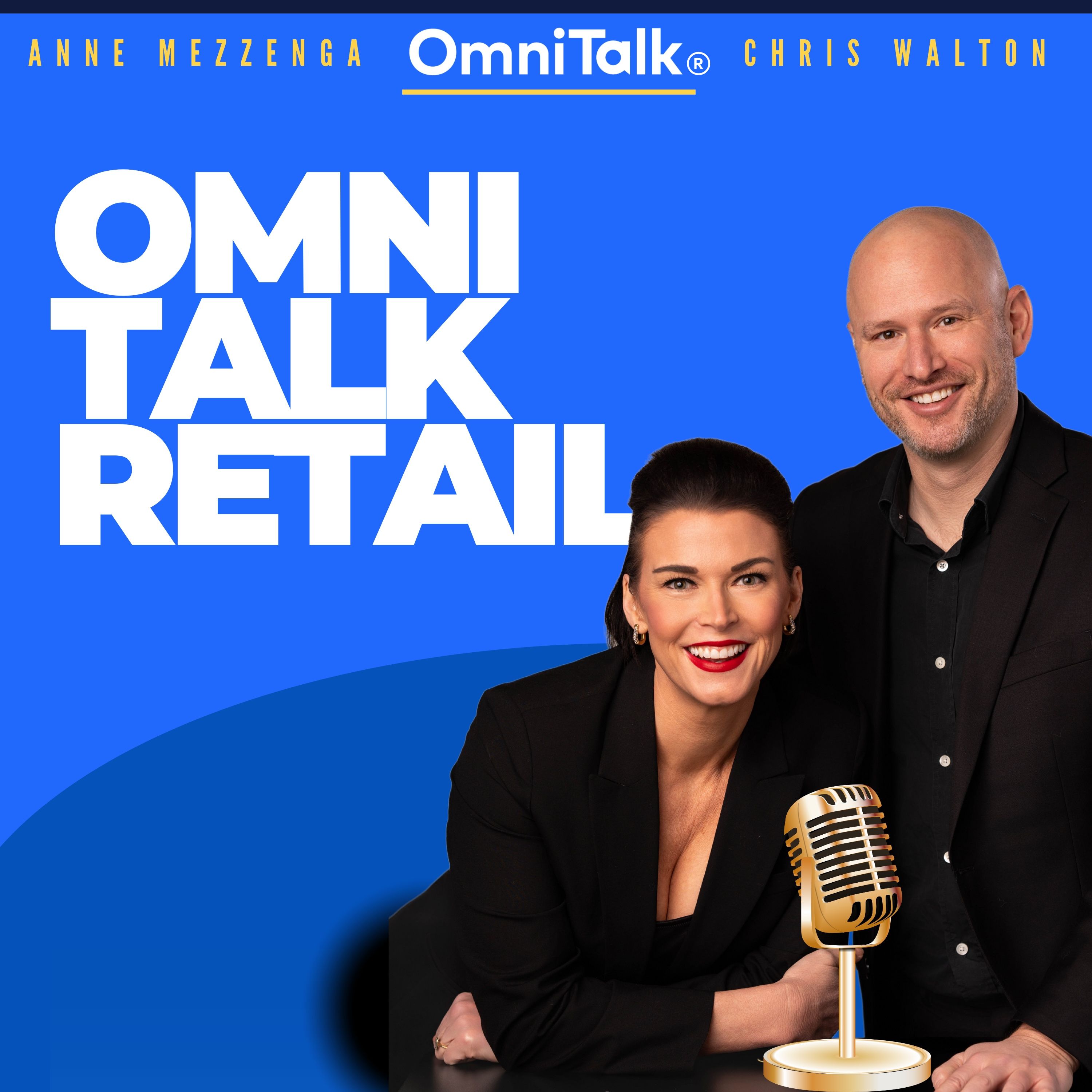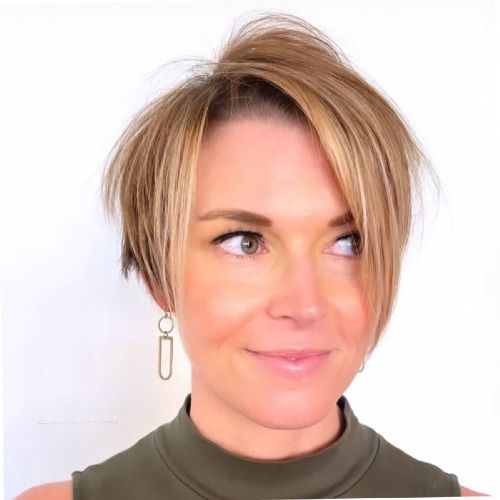How Shein’s On-Demand Model is Reshaping Fashion | Live from Shoptalk 2025
Shoptalk 2025 Exclusive: Shein's Strategy Head Peter Pernot-Day on the Future of Fashion
Chris and Anne sit down with Shein’s Head of Strategy & Corporate Affairs, Peter Pernot-Day, live from the Avalara podcast studio at Shoptalk 2025, to explore how Shein's radically different approach to production and customer experience sets it apart. The discussion covers everything from small-batch on-demand design to retail data engineering and personalization—plus how Shein is thinking about tariffs, technology, and customer loyalty in 2025 and beyond.
📍 Timestamps:
(0:05) Live from Shoptalk 2025 at the Avalara booth
(0:22) Peter’s background & Shein 101
(1:12) What “on-demand fashion” really means
(2:48) Technology that drives Shein’s efficiency
(3:59) Shein’s response to the affordability crisis
(5:00) Advice for other retailers: embrace data engineering
(6:15) Personalization & the "experience gap" in e-commerce
(7:42) Photo search and recommender system innovations
(8:37) The role of customer feedback in design
(9:34) Tariffs, De Minimis, and regulatory planning
(10:56) Peter’s favorite thing about Shoptalk: Serendipity
#shoptalk #shein #retailtech
This podcast uses the following third-party services for analysis:
Podcorn - https://podcorn.com/privacy
Transcript
Hello, everyone.
Speaker A:This is omnitalk Retail.
Speaker A:I'm Chris Walton.
Speaker B:And I'm Anne Mazinga.
Speaker A: live coverage From Shop Talk: Speaker A:Come on by.
Speaker A:We'll be here all day interviewing fantastic executives from in and around retail.
Speaker A:And up first to kick off our coverage today is Shein's head of strategy and corporate affairs, Peter Pernod Day.
Speaker A:Peter, happy first day of Shop Talk, and welcome to omnitalk as well.
Speaker C:It's so great to be here.
Speaker C:It's always a fun day.
Speaker C:First day of Shop Talk.
Speaker C:Get to see all this stuff that's going on.
Speaker C:It's real exciting.
Speaker C:So stoked to be here.
Speaker B:Peter, let's start by giving our audience a little bit of your background and then also about Shein for those who might not be familiar or who are new to Shein.
Speaker B:Lots of new people to Shein.
Speaker C:So my background is less interesting than Shein, but I will do a little bit.
Speaker C:I actually started life as an attorney and joined Shen as our Chief Privacy Officer and then pivoted to corporate strategy about two and a half years ago.
Speaker B:Okay.
Speaker C:And it's been both a very challenging learning experience, but also a super rewarding learning experience.
Speaker C:And I'm just grateful to have had that opportunity.
Speaker C:So what is Shein?
Speaker C:Shein is a fashion, beauty, and lifestyle retailer.
Speaker C:Our mission is to make fashion accessible to everyone.
Speaker C:And we do that through a unique way of producing clothes.
Speaker C:We call it the on demand business model.
Speaker C:So instead of producing thousands or tens of thousands of copies of a garment, we produce 100 or 200.
Speaker C:We use our technology to measure demand, and if there's demand for that product, only then will we make more.
Speaker C:But still maybe only four or 800 copies of a unit.
Speaker C:And this allows us to offer a wide variety of clothes without a lot of inventory at a terrific price that our customers love.
Speaker A:So, Peter, I can't even keep track now of how many recovering attorneys we've had on these shows, particularly at conferences.
Speaker A:It's always fascinating to find out the backgrounds of different people.
Speaker A:But I want to double click into more about what you just said, because you are different than traditional retailers.
Speaker A:So what are some of the key elements in what you just discussed, if you could elaborate a little more, that help Shein stand out in the marketplace?
Speaker C:Totally.
Speaker C:I think one of our biggest differences is that on demand model.
Speaker C:So instead of trying to project what will be trendy and make a massive bet in a large order, we make these very small Bets.
Speaker C:And it does a couple of things.
Speaker C:One, it allows our designers to engage our customers in something like a dialogue.
Speaker C:Will this work?
Speaker C:Will it not?
Speaker C:It also frees them to take a degree of risk.
Speaker C:They can take a bet on micro trends or emerging looks that may be more expensive for traditional retailers, too.
Speaker C:So that's one advantage.
Speaker C:I think the second is that we leverage our mobile app to feed technology or information back to our digital merchant system in a way that I think is somewhat unique and gives us some other advantages about what's coming down the pipe.
Speaker C:It helps our manufacturing partners be more involved in the process.
Speaker C:I think, finally, that digital merchant system itself is really key because it allows us to achieve huge pricing advantages on materials.
Speaker C:Things like zippers, buttons, fabric.
Speaker C:And our suppliers can get that very quickly when they're making clothes because of that access to that platform.
Speaker B:Yeah, I was surprised when you said 200 garments at a time.
Speaker B:Like, I guess I just assumed that it was thousands.
Speaker B:Was still a small volume.
Speaker B:But it's pretty impressive that it's just a couple hundred at a time.
Speaker C:Totally.
Speaker B:Yeah.
Speaker B:You're gonna be on stage.
Speaker B:I assume you're gonna be sharing some of this information.
Speaker B:But what else do you.
Speaker B:Do you plan to talk about?
Speaker B:What do you hope the audience takes away from your session?
Speaker C:You know, one thing that we've been talking a lot about is the affordability crisis.
Speaker B:Yeah.
Speaker C:I think people are still really concerned about the cost, cost of goods and the ability to buy goods and services.
Speaker C:We did some surveys.
Speaker C:We did some surveys in February and found that 67% of US consumers, not just Shein customers, were really interested in finding lower cost and ways to lower the cost of their lifestyles.
Speaker C:And I think that's something that Shein wants to be a partner with.
Speaker C:And so because we're very different and because we aren't really the traditional fast fashion model, but more of an innovative player, I think we can offer a way forward for customers to feel good about what they're buying, but to do it at a lower price point.
Speaker B:And how.
Speaker B:Because Shein is very unique in being able to do that.
Speaker B:You just talked about that.
Speaker B:How do you.
Speaker B:What do you recommend that the people in the audience listening, how can they adjust their businesses to kind of adapt some of those practices?
Speaker B:Do you think so?
Speaker C:I think one of the early wins for companies is to really embrace different data engineering.
Speaker C:And you're like, that sounds super boring.
Speaker A:No, not to us.
Speaker C:But the idea is to, if you have a harmonized set of information, you can leverage some of these tools.
Speaker C:To get these pricing advantages, these technology advantages, and this way to really interact with your customers.
Speaker C:And so I think it's starting with that small work, that kind of foundational work.
Speaker C:A lot of the brands that I talk to, that would be a real game changer for them.
Speaker A:So, Peter, I'm curious too, because one of the things that you get my mind thinking about particularly is around kind of the personalization element.
Speaker A:This is kind of a new personalized way to think about retail for small batch quantities or design to what you want.
Speaker A:How do you see personalization continuing to evolve here over the next five to 10 years in retail, potentially led by Sheehan and others?
Speaker C:I think it's one of the key drivers of growth.
Speaker C:And I think that something that has been a challenge for E Commerce for a long time is something I call the experience gap.
Speaker A:Okay.
Speaker C:When you go to the best physical retail stores, you have an experience.
Speaker C:You can be with your family, your friends.
Speaker C:There's maybe a really talented salesperson or a great display that allows you to engage with the products.
Speaker C:And I think E Commerce has lagged in that.
Speaker C:And so part of our approach to that is using recommender systems to tailor offerings.
Speaker C:It's to have more engaging content on the site, a more shopping focused or browsing focused experience.
Speaker C:And I think those are things that are continuing to.
Speaker C:Will continue to drive successful E commerce forward.
Speaker A:Yeah, because you mentioned it at the outset too.
Speaker A:You, you all spend a lot of time thinking about the front end of that experience.
Speaker A:What are some of the unique elements of the front end that come to mind for you that create what you're talking about?
Speaker C:So I think the key differentiators that we have is that recommender system.
Speaker A:The recommender, yeah.
Speaker C:If you're interested in blouses, maybe you didn't consider pants, footwear, accessories, but our recommender system can help you find those and surface those to the shopper.
Speaker B:Right.
Speaker C:I think the second one is using a browsing like experience.
Speaker C:So instead of having to curate through multiple menus to find your look, you can just scroll through our product catalog.
Speaker C:And I think that's a major advantage.
Speaker A:Got it.
Speaker C:But I think we haven't fully abandoned search.
Speaker C:One area we're really excited about is photo search.
Speaker A:Okay.
Speaker C:So you see that fit, it's really tight.
Speaker C:You want to take a photo of it, you can use the Shein app to photo it or take a photo of it and it'll surface our catalog.
Speaker C:And that's something that I think is another great use of technology to help customers find the looks they love.
Speaker A:That's gotta be great data.
Speaker B:Sorry.
Speaker A:And that's gotta be great data for your designers, too, to understand what they need to make based on what people are submitting photographs of.
Speaker C:Absolutely.
Speaker C:And I think if you use technology as a way to augment the design process, to augment the customer experience, those are really fantastic results or can lead to fantastic results.
Speaker B:It's what I think makes Shein such a competitive player in the apparel space right now, too, is not just the fact that you're trying to make affordable clothing, but just all of the technology and the data to your earlier point that you're leveraging to really customize that shopping experience for your consumers.
Speaker B:One thing I have to ask you about, though, is tariffs and de minimis exceptions.
Speaker B:How do you think about that, Peter?
Speaker B:And what do you think that means for Sheehan and how you prepare kind of going forward here?
Speaker B: Just in: Speaker B:But, like, how do you think about that and how.
Speaker B:How do you recommend that retailers think about that?
Speaker C:So I think Shein has.
Speaker C:Has long called for reforming the de minimis exception.
Speaker B:Right.
Speaker C:And I think it's something that we continue to be interested in.
Speaker B:Yeah.
Speaker C:And we're happy to work with partners in government and, you know, civil society groups to try to drive meaningful change.
Speaker C:I think our position is whatever changes come and change is needed, it has to be customer focused.
Speaker B:Okay.
Speaker C:And I think if you can continue to use customers as the North Star, the customer experience, particularly as they're grappling with the cost of living crisis.
Speaker B:Right.
Speaker C:I think that those will lead to a better policy outcome.
Speaker C:But in terms of what's going to happen, I don't have any crystal ball.
Speaker A:Yeah.
Speaker B:How is that impacting your job specifically?
Speaker B:Like, what kind of things are you dealing with day to day that are trying to prepare for this and trying to keep that customer first?
Speaker C:So I think it really is the last part of your question.
Speaker C:It's maintaining that customer centricity, understanding what customers want, and then translating that into solutions, both from a business perspective, but also from a policy perspective.
Speaker C:So that's really what drives my.
Speaker B:That's what you're spending time doing.
Speaker C:Yeah, I spend a good deal of time doing that.
Speaker B:Yeah, I bet you do.
Speaker A:I bet you do.
Speaker B:I bet.
Speaker A:I'm curious, too.
Speaker A:Like, I'm curious, are there particular reforms you'd like to see in regards to diminishing de minimis exception?
Speaker C:You know, I think we just want to make sure that the process is fair, creates an equal playing field.
Speaker C:That it protects customers and advances product safety, and that it's also something that allows customers to engage with a wide variety of brands and products.
Speaker C:But beyond that, I can't get into specifics.
Speaker A:Yeah, right.
Speaker A:No, that makes sense.
Speaker A:Okay, great.
Speaker A:De minimis.
Speaker A:The hardest word to say in retail, everyone.
Speaker A:All right, so let's get you out of here on this.
Speaker A:What is your favorite thing about shop talk?
Speaker C:You know what I love about shop talk is meeting interesting people.
Speaker C:You come in and you're like, okay, I have an agenda.
Speaker C:I have a plan.
Speaker B:Sure.
Speaker C:You know, a company like ours, we have a very well thought out plan on how to engage.
Speaker C:But just walking around the exhibit booth and like, meeting other companies and you just hear ideas, and you're just like, I never thought of that.
Speaker C:And to me, that sort of serendipity, almost, that is the best part.
Speaker A:It's the number one word we always hear.
Speaker C:Serendipity.
Speaker A:Serendipity, Yep.
Speaker C:Nice.
Speaker A:You ask that question of a lot of people.
Speaker A:They always say serendipity.
Speaker B:Absolutely.
Speaker C:All right.
Speaker B:All right, well, thank you so much, Peter.
Speaker B:Oh, go ahead.
Speaker C:No, no, I cut you off.
Speaker C:I'm sorry.
Speaker B:No, I want to hear what you had to say.
Speaker C:I was going to say thank you.
Speaker B:Oh, well, you're welcome.
Speaker B:Thank you so much for joining us.
Speaker B:Thanks for getting us warmed up today.
Speaker B:We got a big day ahead here.
Speaker B: We'll be at Avalara's booth,: Speaker B:Thank you to them for helping make all of our coverage here possible.
Speaker B:And until the next interview, Chris, as.
Speaker A:Always, be careful out there.



